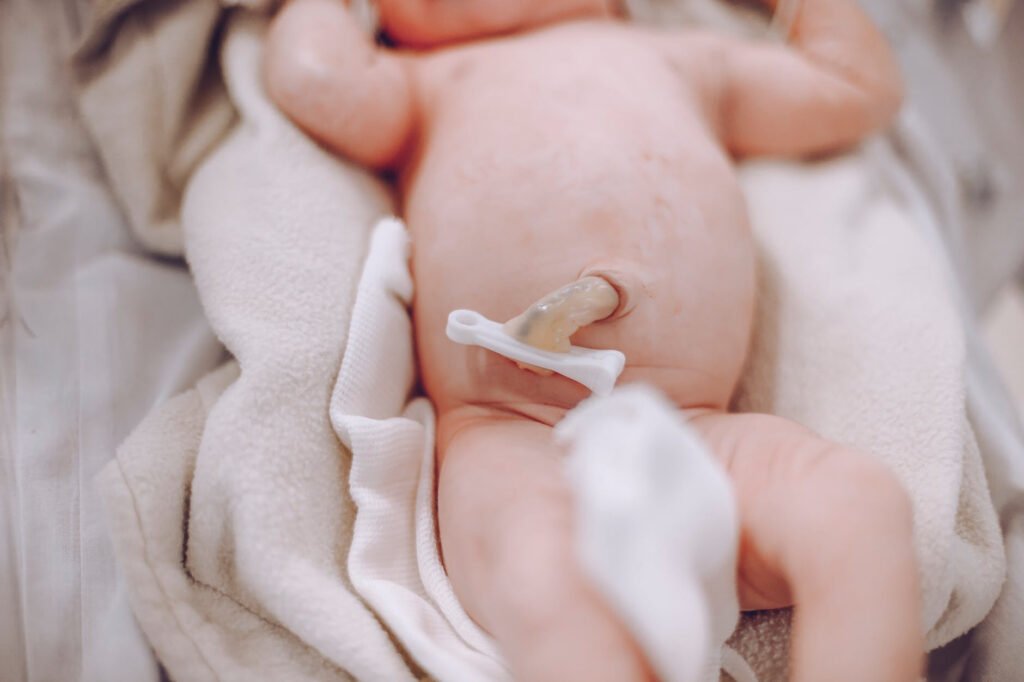Approximately 30% of the baby’s blood remains in the placenta and cord at birth; immediately shutting off this source can deprive him of 60% of the red blood cells. This placental blood supply carries 40 to 50 mg of iron, helping prevent anemia. For this reason, the World Health Organization recommends late cord clamping at least one to three minutes after birth. Most home birth midwives, however, do not clamp the cord until it stops pulsing (typically at least 3 to 5 minutes) allowing the maximum amount of the baby’s own blood supply from the placenta to enter the body.
Can delayed cord clamping cause any problems? In the past it was hypothesized that all that extra blood could increase physiologic jaundice in the newborn, but time has not shown this is true and it is no longer considered an issue.

Concerns about delayed cord clamping also surround the mother. It has been implied that delayed cord clamping may lead to an increase in postpartum hemorrhage.
However, there is no statistical evidence proving that delayed cord clamping results in an increase in blood loss. There is also no significant difference regarding blood loss greater than 500ml between early and delayed cord clamping.
Are there instances when the cord should be clamped immediately? Yes, but they are rare. One possible scenario would be a very tight cord preventing the baby from being born. Even when babies need help breathing, experts believe it best to keep the cord intact so the baby is continuing to receive oxygenated blood from the placenta. Keeping the lifeline connected can only help as baby makes the transition to the outside world.
If you are planning a hospital birth, you may want to discuss with your doctor or midwife how long the cord may be left intact for your baby. If you are planning out of hospital birth, your midwife can explain what her practice is and why she holds that position.